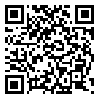1- Department of Sport Injuries and Biomechanics, Faculty of Sport Sciences and Health, University of Tehran, Tehran, Iran , ali.asghar.maleki@ut.ac.ir
2- Department of Sport Injuries and Biomechanics, Faculty of Sport Sciences and Health, University of Tehran, Tehran, Iran
3- Department of Behavioral and Cognitive Science, Faculty of Sport Sciences and Health, University of Tehran, Tehran, Iran
2- Department of Sport Injuries and Biomechanics, Faculty of Sport Sciences and Health, University of Tehran, Tehran, Iran
3- Department of Behavioral and Cognitive Science, Faculty of Sport Sciences and Health, University of Tehran, Tehran, Iran
Abstract: (17 Views)
Background: This study investigated the prevalence of injuries among Taekwondo athletes, with specific emphasis on psychological attributes, namely competitive anger and aggression, as well as sleep quality. Although these factors are recognized contributors to sports-related injury risk, their association with Taekwondo-specific injuries remains insufficiently explored. The research aimed to identify injury patterns and evaluate the relationships between these psychological constructs, sleep quality, and injury incidence to guide targeted prevention and management approaches.
Methods: A cross-sectional survey was administered in Tehran between November and December 2023 to 201 Iranian Taekwondo practitioners. Participants completed a validated Farsi-language online questionnaire capturing demographic information, training characteristics, scores on the 12‑item Competitive Aggressiveness and Anger Scale (CAAS), the 19‑item Pittsburgh Sleep Quality Index (PSQI), and self-reported musculoskeletal injuries over the preceding six months. Data analyses employed descriptive statistics and multivariable logistic regression to determine independent predictors of injury.
Results: Among respondents, 118 athletes (58.7%) reported at least one injury, most commonly involving the ankle (20.6%) and foot/toe (17.6%). Adjusted regression analyses revealed that each one‑point increase in CAAS score was associated with greater injury risk (OR = 1.23; 95% CI 1.11–1.36; p < 0.001), as was each one‑point increase in PSQI score (OR = 1.12; 95% CI 1.05–1.38; p = 0.006). Training more than three sessions per week (OR = 4.01; 95% CI 1.93–8.33; p < 0.001) and session durations exceeding 60 minutes (OR = 2.27; 95% CI 1.07–4.84; p = 0.032) were also independent predictors.
Conclusion: The findings underscore the need to systematically assess competitive aggressiveness, anger, sleep quality, and training load when formulating injury prevention and management strategies for Taekwondo athletes.
Methods: A cross-sectional survey was administered in Tehran between November and December 2023 to 201 Iranian Taekwondo practitioners. Participants completed a validated Farsi-language online questionnaire capturing demographic information, training characteristics, scores on the 12‑item Competitive Aggressiveness and Anger Scale (CAAS), the 19‑item Pittsburgh Sleep Quality Index (PSQI), and self-reported musculoskeletal injuries over the preceding six months. Data analyses employed descriptive statistics and multivariable logistic regression to determine independent predictors of injury.
Results: Among respondents, 118 athletes (58.7%) reported at least one injury, most commonly involving the ankle (20.6%) and foot/toe (17.6%). Adjusted regression analyses revealed that each one‑point increase in CAAS score was associated with greater injury risk (OR = 1.23; 95% CI 1.11–1.36; p < 0.001), as was each one‑point increase in PSQI score (OR = 1.12; 95% CI 1.05–1.38; p = 0.006). Training more than three sessions per week (OR = 4.01; 95% CI 1.93–8.33; p < 0.001) and session durations exceeding 60 minutes (OR = 2.27; 95% CI 1.07–4.84; p = 0.032) were also independent predictors.
Conclusion: The findings underscore the need to systematically assess competitive aggressiveness, anger, sleep quality, and training load when formulating injury prevention and management strategies for Taekwondo athletes.
Send email to the article author
| Rights and permissions | |
 |
This work is licensed under a Creative Commons Attribution 4.0 International License. |



